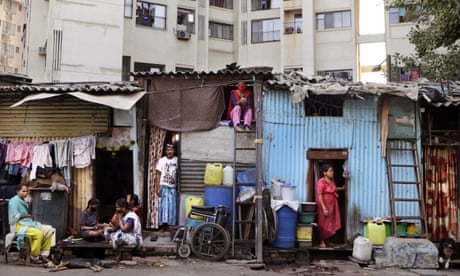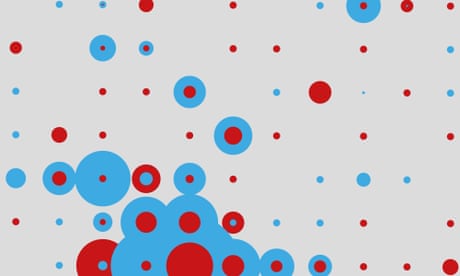 |
| Fonte: aqui |
A lot has been written about how this pandemic is exacerbating social inequalities. But what if it’s because our societies are so unequal that this pandemic happened?
There is a school of thought that, historically, pandemics have been more likely to occur at times of social inequality and discord. As the poor get poorer, the thinking goes, their baseline health suffers, making them more prone to infection. At the same time they are forced to move more, in search of work, and to gravitate to cities. The rich, meanwhile, have more to spend on luxuries, including products that hail from far-flung places. The world becomes more tightly connected through trade, and germs, people and luxury goods travel together along trade routes that connect cities. On paper, it looks like a perfect storm.
What about in reality? Historian Peter Turchin has described a strong statistical association between global connectedness, social crises and pandemics throughout history. An example is the second century CE, when the Roman and Chinese empires were at the peak of their wealth and power; the poor in both places were very poor, and the ancient silk routes were enjoying a heyday. Starting in 165CE, the Antonine plagues struck Rome; within a decade plague was devastating China too, and both empires then went into decline.
The plague of Justinian in the 6th century and the Black Death in the 14th century emerged in similar circumstances, and Turchin sees the same forces at work again today: globalisation, leading to the emergence of new human pathogens, combined with widening inequality. “And now it looks like our Age of Discord got its own pandemic,” he wrote in a blog last week.

Coronavirus could turn back the clock 30 years on global poverty
Read more
Pandemics don’t always trigger social unrest, but they can do, by throwing into relief the very inequalities that caused them. That’s because they hit the poor hardest – those in low-paid or unstable employment, who live in crowded accommodation, have underlying health issues, and for whom healthcare is less affordable or less accessible. This was true in the past and remains so today. During the 2009 flu pandemic the death rate was three times higher in the poorest fifth of England’s population than in the richest. Covid-19 is showing no signs of departing from the pattern, which, because of the way the socioeconomic dice fall, also has a racial dimension.
But there is something brand new about this pandemic, which has never been seen before in the history of humanity – and that is our unprecedented global experiment in lockdown. These lockdown measures are designed to slow the spread of the disease, relieve the burden on health systems and ultimately save lives – and it looks as if they may be doing that. But they may also be exacerbating social inequalities themselves.
We won’t have a full picture of their impact until the pandemic is over, but there have been anecdotal reports that point to this, and some more systematic analyses are emerging. Preliminary findings from a survey of 1,200 Norwegians, published last week, indicate that people with lower levels of education and income are more likely to be temporarily laid off. They can apply for a government furlough scheme, similar to the one in the UK, but they are also more likely to see their income fall and to worry that their unemployment might become permanent.
The Norwegian study found no correlation between poverty and self-reported sickness from Covid-19, but it did find that poorer, less well-educated people were less likely to comply with social distancing guidelines. It’s hard to tell why, says demographer Svenn-Erik Mamelund of Oslo Metropolitan University, who was involved in the survey, but he has theories.

Coronavirus: the week explained - sign up for our email newsletter
Read more
People in lower socioeconomic groups may feel more pressure to go out to work, Mamelund says. They may also have lower levels of health literacy, less trust in officialdom, and even language problems if they are of non-Norwegian origin. He fears that these lower levels of compliance with public health measures might spill into higher levels of sickness and death later on, as they are exposed to the disease.
Whether these measures are justified by the threat Covid-19 poses to human life is impossible to say, but those who imposed them knew there would be a high price to pay. Last year Mamelund sat on a committee that advised the World Health Organization on non-pharmaceutical interventions in case of a pandemic. The committee’s job was to assess the costs and benefits of measures for slowing disease spread – everything from hand-washing to border closure – based on the available evidence. They came up with a list of recommendations that excluded lockdown, even in the worst-case scenario. “We never suggested lockdown because we knew it would be so harmful socially and economically for all countries,” he says. “And I never thought the rest of the world would follow China’s lead.”
Norway has a small population – 5.4 million people – and a well-funded welfare state. There have been no protests there, so far, but the social impact of lockdown has been more visible elsewhere. In India there have been reports of deaths among unemployed migrant workers returning home in search of food; many countries, including the US, have seen workers taking industrial action, and anger has been expressed in rural communities over wealthy city-dwellers retreating to their second homes for the duration.
Governments should keep an eye on these developments, in weighing up when and how to lift the lockdown, because even if it’s difficult to argue today that the cure is worse than the disease, the cure might provoke an entirely different malaise – and history teaches us that no society is immune to that.
That’s the symptomatic treatment. In the long term, of course, they – and we – should address the dreadful inequality in our societies, which this pandemic is picking apart with a lethal scalpel.
• Laura Spinney is a science journalist, novelist and author. Her latest book is Pale Rider: The Spanish Flu of 1918 and How it Changed the World
Sem comentários:
Enviar um comentário